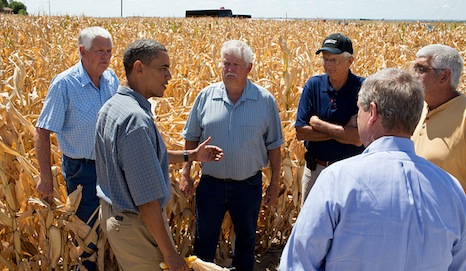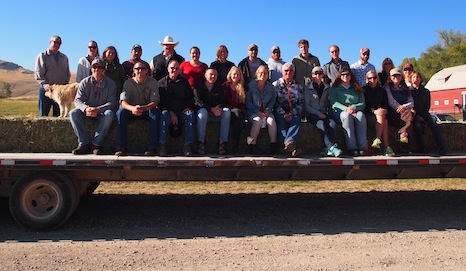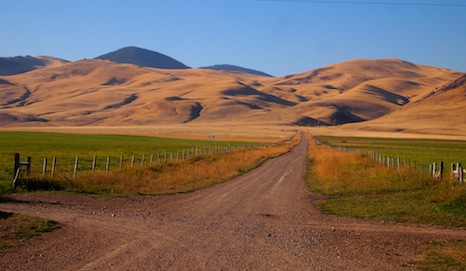Drought in America
As drought conditions persist throughout the West, every drop of water counts.
Intro - Drought
In March 2016, the President issued a Memorandum and a Federal Action Plan on building national capabilities for long-term drought resilience.
What’s at Stake
Drought threatens multiple sectors of the economy and leads to increased risks to communities on many fronts. That’s why the Administration’s efforts will help to address the drought challenge from all angles, from employing workers and providing food assistance to making long-term investments to support water efficiency and conservation and addressing wildfire.
Currently, 35 percent of the West is facing severe to exceptional drought. In California, the mountain snowpack that supplies most of the water during the summer months is only a trace above zero. In addition to targeting funding and resources to those most impacted, for more than a year the Administration has been doing everything it can to support communities facing drought.
The National Drought Resilience Partnership
As called for in the President’s Climate Action Plan, the National Drought Resilience Partnership (NDRP) is coordinating long-term Federal preparedness across the country and is working closely with State, local government, agriculture and other partners to improve community preparedness and resilience to drought. The NDRP is dedicated to helping communities better prepare for future droughts and reducing the impact of drought events on livelihoods and the economy.
Funding and Assistance
The administration is committed to providing assistance to farmers, communities and families impacted by drought. Here are some of the assistance programs:
The WaterSMART Water and Energy Efficiency and Title XVI Grants: On May 20, 2015, DOI’s Secretary Jewell announced $50 million to improve water efficiency and conservation in Western states through the following two programs:
-
WaterSMART Water and Energy Efficiency Grants. Projects awarded seek to conserve and use water more efficiently, increase the use of renewable energy, improve energy efficiency, benefit endangered and threatened species, facilitate water markets, carry out activities to address climate-related impacts on water or prevent any water-related crisis or conflict, and
- Title XVI Program. Funding went to water reclamation and reuse projects and feasibility studies. Water recycling provides a local water supply that is often drought-resistant, since sources such as treated municipal wastewater continue to be available during periods of water shortage.
A fiscal year 2016 Title XVI funding opportunity was posted on www.grants.gov on October 16, 2015, and proposals are due December 10, 2015. The WaterSMART Water and Energy Efficiency Grants funding opportunity for fiscal year 2016 is expected to be posted in November 2015.
New Drought Response Program: On August 12, 2015, Bureau of Reclamation (Reclamation) Commissioner Estevan Lopez announced 23 projects to receive $5.2 million in grants new Drought Response Program. The grants provide cost-shared funding for proactive drought planning and projects to build long-term drought resiliency in nine states in the West, and states, tribes and local governments in the 17 Western States. The Drought Response Program funding opportunities for fiscal year 2016 are expected to be posted in January 2016.
New Funding for NRCS’s Environmental Quality Incentives Program: On May 18, 2015, Secretary Vilsack announced $21 million through NRCS’s Environmental Quality Incentives Program (EQIP), targeted to farmers and ranchers in eight western states experiencing extreme or exceptional drought as defined by the U.S. Drought Monitor.
High-Impact Conservation Projects: In January 2015, USDA announced more than $370 million in funding to 115 high-impact conservation projects across the nation that will improve soil health, water quality and water use efficiency, wildlife habitat, and other related natural resources on private lands. In May 2015, USDA announced up to $235 million for the next round of projects.
Action Resources
Action Resources

Drought Risk Management Research Center:
In June 2015, NOAA announced the creation of the Drought Risk Management Research Center (DRMRC) at the National Drought Mitigation Center (NDMC) at the University of Nebraska-Lincoln. The Center conducts research to develop drought monitoring products and tools; integrate information across all scales of preparedness and impacts; advance regional drought early warning systems; and advance innovations in planning for drought.
Learn more.

USDA and NASA Innovative Partnership:
USDA and NASA are partnering to protect America's working lands, predict and prevent natural disasters, and inspire young people to pursue STEM and agriculture careers. USDA has expanded access to NASA satellite data, which will help U.S. Forest Service’s fire fighters and first responders to better detect wildfires and predict their behavior. The satellite data can also help create soil moisture maps to improve water availability forecasting and to provide an early-warning system for producers.
Learn more.

California Headwaters Partnership:
As part of the President's Climate and Natural Resources Agenda, USDA, DOI and the state of California created a partnership to invest in forest restoration and headwater protection in the Sierra-Cascade headwater region. The California Headwaters contribute greatly to the state’s water supply; for example, the Sierra-Cascade watersheds provide drinking water to 25 million people, almost two-thirds of the California population, and the majority of water for irrigated agriculture.
Explore the program.
Visit the US Drought Monitor for the current drought conditions.